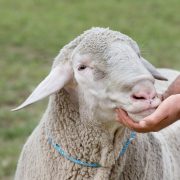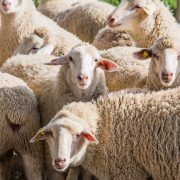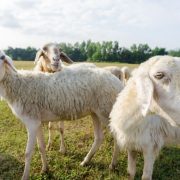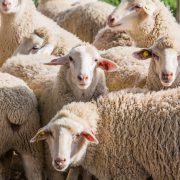A practical approach to dealing with contagious ovine digital dermatitis (CODD) on farms
A practical approach to dealing with contagious ovine digital dermatitis (CODD) on farms

Requires membership/payment
This article can be accessed via RCVS Knowledge Library Membership (click here).
In our edition of: Dec 2018
In our categories of: farm animals
our summary:
Angell, J., Grove-White, D. and Duncan, J. (2018) A practical approach to dealing with contagious ovine digital dermatitis (CODD) on farms. Livestock, 23 (Sup5), pp. 15-18
Contagious ovine digital dermatitis (CODD), which causes severe lameness in sheep, is considered to affect approximately 50% of farms in the UK yet the evidence base is limited and treatment and control on affected farms can be problematic.
This review paper, based on evidence in the literature and the experience of the authors, discusses the aetiology of CODD and its diagnosis and treatment and offers practical suggestions for its prevention and control.
The paper gives:
- an overview of the aetiology of CODD; Treponema spp. are suggested as the most likely infectious agent
- highlights that footrot (Dichelobacter nodosus) is a risk factor in the development of CODD
- an overview of the possible differential diagnosis for foot lesions in sheep
- an overview of the clinical signs typically present in cases of CODD, to aid diagnosis
With prevention, the importance of on-farm biosecurity is stressed, in particular strict quarantine of new stock to prevent the introduction of CODD to unaffected flocks and the adoption of good cleaning and disinfection practices.
The three available studies that examine different antibiotic treatment protocols for CODD are summarised, with whole flock administration of antibiotic not recommended. Potential methods of controlling CODD outbreaks are highlighted, including control of footrot, rapid isolation and antibiotic treatment of infected individuals, and co-grazing with other susceptible species.
CODD is now widespread in the UK and can cause welfare problems at both individual and flock level, however there is a limited evidence base. This paper provides a good overview of CODD; it will be a valuable reference source for practitioners due to the clear practical advice given whilst highlighting the need for further studies into the aetiology and best management of this condition.
Image copyright attribute: Heath Johnson
Join the discussion
We encourage discussion on all material highlighted in each edition of inFOCUS. Use the button below to join the conversation on Twitter and include your comment in the feed for this issue.










Leave a Reply
Want to join the discussion?Feel free to contribute!